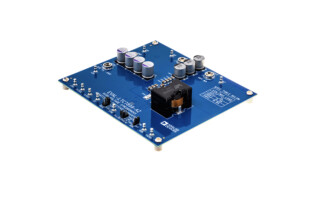It’s No Secret That AI Is Hard
November 15, 2023
Sponsored Story

Admit it—you’re confused by all the “information” that’s circulating regarding how to design a system with AI. The first thing that must be clear is this: you are not designing an AI system.
You are designing a system for XYZ application, and it takes advantage of AI to make the application work better/faster/greener. It might be consumer, or industrial, or medical. But the primary focus needs to be what is needed to make the system run better in that application.
The second confusing part has to do with all the acquisitions that have occurred recently, with CPU companies and Cloud vendors buying algorithm companies and so on. In many cases, these acquisitions make sense, but it’s still more information that the developer needs to decipher.
How Much AI Is Enough
And finally, we get to the question, “how much AI do I really need?” That’s a tough one to answer because the technology is so new. Both the suppliers and developers are still trying to figure out how the hardware and software work best together, and too often, systems are over-designed, adding more cost than necessary. For example, if all you’re trying to do is some simple task like a portion of predictive maintenance, you likely don’t need all the bells and whistles of the latest high-powered CPU. And of course, there’s the never-ending debate over what should be performed in hardware versus executed in software.
The real message here is that developers need to think differently about AI than they have about other “breakthrough” technologies. They need to understand what the task at hand is, what resources are at their disposal, and of course, what the potential bill of materials can look like. Not until you’ve figured out all of those things can you start the prototyping process.
There have been many innovative offerings over the last year or so, and we’ve detailed many of them here at Embedded Computing Design. Another one is being announced today, from Synaptics. The Astra platform is what the company is calling an AI-native compute platform for the IoT, and it’s aimed at consumer and industrial applications. They claim that the architecture is built on “standards-based approaches to firmware-OS interfaces, security, and workload acceleration.”
To go along with that, Synaptics is providing a comprehensive BSP that supports Linux, Android, and other popular RTOSs. It also includes all of the relevant connectivity IP, AI frameworks, and development kits.
One item that caught my attention was the line about providing “market-specific application profiles.” To me, this says that they are giving you the right amount of AI to suit your application, thereby reducing the decisions that need to be made by the development team, and, in theory, expediting the time to prototype.
Another important point that’s in Synaptics’ favor is that it already is quite good at both sensing and connectivity, key components of AI. These are areas that company has played in, and in some instances, held leadership positions, for years.
Only time will tell whether Synaptics’ Astra can bring together all the different pieces of the AI puzzle that are required by the developer. But it’s certainly worth a look.





